In the post below, I will provide a comprehensive list of tourist places in Nubra Valley and some fun activities that you can enjoy during your stay. The list below includes all major attractions as well as places that are not yet on the tourist map and receive almost no visitors.
The entire Nubra Valley is a tourist attraction in itself, to be honest. It is one of the most visited places in Ladakh and there is nothing here that is not worth seeing. Right from the natural beauty of a cold desert to the wonderful people living here, it is an experience that you will cherish for a long time.
Most of the tourists spend just one day in Nubra Valley and move on either towards Leh or Pangong. In my opinion, you should stay for at least 1 day in the valley itself and explore. If could spare 2 to 3 days then you will be able to cover it in almost its entirety.
This will of course depend on the time you have in hand and the mode of your travel. At the end of the article, I will also suggest an ideal itinerary that you can follow for visiting Nubra Valley.
Quick Navigation
About Nubra Valley
It is believed that the original name of the valley was Ldumra, literally meaning valley of flowers. Now also known as the “Orchard of Ladakh” it is a stunningly beautiful place that attracts thousands of tourists each year.
Nubra is a Tri-armed valley formed by the Shyok and Nubra (also known as Siachen) rivers and is a prime farming land in Ladakh. The entire valley is a sight to behold in itself with its wide landscapes and Shyok river flowing through the mighty Himalayas.
Diskit is the largest town in Nubra Valley and also its headquarters. The average altitude of the valley is about 10,000 ft. For more details about the valley and to know the best way to reach there, please take a look at How to Plan a Trip to Nubra Valley from Leh.
Tourist Places in Nubra Valley
There are plenty of tourist Attractions in Nubra Valley, right from the natural beauty of the place to the religious monasteries. Mentioned below is a comprehensive list.
Khardung La Pass
Once considered the highest motorable road in the world (now this claim is disputed by most), Khardung La is one of the primary tourist attractions of the entire Ladakh region and not just Nubra Valley.
At a height of 5,359 m (17,582 ft), this pass was built in 1976 by the Border Roads Organization. It was opened for civilian traffic in 1988. The top of the pass is at a distance of about 35 km from Leh and the entire stretch is a steep ascent. The pass offers a panoramic view of the surrounding snow-capped ranges and steep valleys.
Khardung La is not exactly in Nubra Valley though. You cross the pass to enter the valley and thus, it also gets included as a place for sightseeing in Nubra Valley. If you were short on time, you could also just make a short trip to the pass from Leh without coming to Nubra. For details, take a look at How to Plan a Trip to Khardung La from Leh.
Hunder Sand Dunes
These sand dunes are located between Hunder and Diskit villages and present an amazing site of white sands. It is also among the top camping sites in Ladakh. Camel Safari is also available for tourists in these dunes.
Sumur Sand Dunes
These are dunes near the confluence of the Siachen and Shyok rivers in Sumur Village. The primary difference between the dunes in Hunder and Sumur is that while the ones in Hunder get crowded a lot, the ones in Sumur are still an offbeat destination.
I spent 3 days in Sumur during my latest trip to Ladakh. During those 3 days, I saw no tourists at all at Sumur Sand Dunes. It was just me and my friend walking around and enjoying the natural beauty of the place.
It is possibly also the best spot for self-camping in Nubra Valley. The views that you get from Sumur Dunes are charmingly beautiful. If your idea of the trip is to spend some time away from the crowd, Sumur Sand Dunes are an ideal place to do so.
Bactrian Camels
Also known as the two-humped camel, it is a very rare animal. Its estimated population is only two million all over the world. You will see camels all over India but a Bactrian camel can only be seen in Nubra Valley.
These are found at Hunder and a camel safari in the sand dunes is one of the most popular tourist activities in Nubra Valley. To know more about these camels, take a look at this wiki page, Bactrian Camel.
Diskit Monastery
Diskit Monastery is one of the oldest monasteries and the largest in Nubra Valley. Built in the 14th century, it is a popular tourist destination offering a spectacular view of Nubra Valley from its roof.
There is a statue of a Deity in the Gompa holding a mummified human forearm and head [believed to be of a Mongol Warrior] in its hand. For more details on this, please take a look at Diskit Monastery in Nubra Valley – Ladakh.
Maitreya Buddha
Located close to Diskit Monastery, it is an impressive 32-meter statue of Buddha that was built in 1996 and sits facing Pakistan. It is said to be built with three main functions in mind: protection, prevention, and peace.
The statue faces Pakistan and the reason for doing that is said to encourage peaceful relations between the two countries. Below is a picture of the statue with Diskit Gompa in the background.
Hot Water Springs
Located in Panamik, Nubra Valley’s hot water spring is a must-visit. Villagers have built small bathrooms around the spring where you can take a dip in the refreshing water. The water of this spring is said to be curative, due to the presence of sulfur and other chemicals in it.
Samstanling Monastery
Located in Sumur village, this 140-year-old monastery was built in the 19th century by Lama Tsultim Nima and is home to more than 50 monks.
Yarab Tso Lake
Yarab Tso is a small lake located in the Nubra Valley of Ladakh, at a distance of about 135 kilometers from Leh. It is a small body of water that is considered sacred by both Buddhists and Muslims who live in the region.
Due to its small size, Yarab Tso is still largely unknown and doesn’t get as many visitors. It is not exactly connected by a motorable road and one has to walk a short distance to get here. Due to this, even people who know about the lake end up skipping it entirely.
Nonetheless, it is a beautiful lake sitting in a very peaceful environment. The location and the overall setting of Yarab Tso definitely make it one of the prime attractions of Nubra Valley.
If you were staying in Panamik during your visit to Nubra, you can easily visit this lake in an hour and a half. For more details, please take a look at How to Plan a Trek to Yarab Lake.
Ensa Gompa
Ensa Gompa (Ensa Monastery) is a monastery located on the top of a mountain in Nubra Valley, across the Siachen River, on the way to Murgi Waterfall.
This 400-year-old Gompa is famous for Buddhist murals and was once an important learning center for nearby villages. From the top, it offers an amazing view of the valley around and the villages in it.
Murgi Waterfall
Murgi Waterfall is a waterfall located in the village of Murgi, in the Nubra Valley of Ladakh. It is one of the least known waterfalls of Ladakh that does not receive a lot of visitors but is a beautiful place to visit.
If properly developed and promoted, this small village and its waterfall will surely help to attract even more tourists to Nubra Valley.
Both Ensa Gompa and Murgi Waterfall are located on the same road and can be easily covered within a couple of hours from Panamik. For more details, please take a look at How to Plan a Trip to Murgi Falls and Ensa Gompa.
Siachen Base Camp
Siachen Base Camp is an Indian Army base camp located in the Nubra Valley of Ladakh. It is one of the 2 bases from where the military operations at Siachen Glacier are controlled, the other base being near THOISE. Tourism is now allowed in the region, even though civilians are not permitted to go all the way inside the Army base.
The drive from Leh to Siachen Base Camp is about 200 kilometers long and will take you anywhere between 8 to 10 hours to complete. The road runs across the high-altitude pass of Khardung La and the scenic Nubra Valley.
For more details, you can also take a look at How to Plan a Journey to Siachen Base Camp from Leh. Both Siachen Base Camp and OP Baba Shrine are located next to each other and can be covered on the same trip.
Turtuk
This is the last village on the road accessible by civilians. As you enter Turtuk, you will know what it means to be “frozen in time”. One of the gateways to Siachen Glacier, it is the last outpost in India after which the Pakistan-controlled Gilgit-Baltistan begins.
The population here is mostly Muslims of Balti origin. The landscape here would turn from Barren Ladakh to green all around. You will find fields of everything from apricots, apples, and tomatoes to cauliflowers and cabbages.
It was opened for Tourists in 2010 and people here primarily depend on agriculture and tourism for a living. It is a great place to spend a night. Accommodation here is very basic in the form of homestays and a few guest houses which are big enough to hold 5 to 6 people and very clean.
The major attraction of this village is the beautiful vistas and immense peace. It is also famous for walking sticks made from the horns of wild ibex.
There is a Balti Heritage Museum in the village that is worth visiting. Another attraction in the village is a small waterfall but you will have to trek for about 2 hours to get there. For more details, please take a look at Turtuk Village – How to Plan your Trip & What to See.
Thang
Thang is a small village located in the Nubra Valley of Ladakh. It is one among the numerous other such villages in the valley but what makes it special is its location and history.
It is a village that was seized from Pakistan along with three other villages in this area as a result of the Indo-Pakistani War of 1971. Today, it sits right next to the line of control at a distance of only about 2.5 kilometers.
Also called Dhothang and Thanga Chathang, this village is in the historical Chorbat region of Baltistan, divided between India and Pakistan by the 1972 Line of Control. The area’s population is largely Balti Muslims. For more details, please read How to Plan a Trip to Thang Village from Leh.
Hunder Gompa
It is one of the popular attractions crossing through the Hunder Sand Dunes. The monastery is located in Hunder village.
Also Read: How to Plan a Trip to Leh Ladakh – A Complete Travel Guide
Lachung Temple
It is a beautiful temple located near Diskit Monastery. You can visit both the Diskit monastery and this temple during your visit.
Zamskhang Palace
Located near Sumur in the village of Kygar, Zamskhang Palace is believed to be the residence of the kings of Nubra. Long abandoned and standing in ruins, it is now a site of several tiny stupas. Authorities have now started restoration work on this ancient palace.
Shyok River
Shyok River originates from the Rimo Glacier, one of the tongues of the Siachen Glacier, and then merges into the Indus River in Pakistan.
The alignment of this river is very unusual, flowing in a southeasterly direction first, and then after joining the Pangong range, it takes a northwestern turn, flowing parallel to its previous path.
Siachen River
Also known as the Nubra River, it is a tributary of the Shyok River which ultimately joins the Indus River to the east of Skardu in Pakistan.
Waterfall in Turtuk
There is a small but beautiful waterfall located in Turtuk. If you are staying there for the night, you should visit this waterfall as well. It requires a couple of hours of trekking though. Just ask the villagers and they will point you in the right direction.
Things to do in Nubra Valley
After reviewing tourist places in Nubra Valley, let us also briefly talk about the different tourist activities that you can be a part of. Most of it is already covered and is derived from the information above. But here is a quick summary.
- Camel Safar in Hunder
- Camping in Hunder / Diskit
- Trekking to Yarab Tso and Turtuk Waterfall
- Motorcycling (You can rent a bike in Leh for this)
- Photography
- Archery
Towns and Villages in Nubra Valley
Mentioned above are what can be called tourist places in Nubra Valley. Below is a list of all the towns/villages located in Nubra Valley.
Khardung Village
Little before Nubra Valley and a few kilometers down from Khardung La, this village is a sight for the sore eyes. Distant hamlets and their patchwork fields add a human touch to the muscular scenery and immense views, making it look like a patch of green in the lap of barren Himalayan peaks.
Khalsar
This is another small village that falls along the way. Right after Khalsar is the bifurcation where the road gets divided in two, one running towards Warshi village and the other towards Turtuk.
Sumur
As you take the diversion towards Warshi, the first and somewhat spread-out village you will come across is Sumur. It is quite a scenic village, surrounded by bright yellow mustard fields and vast stretches of grass and vegetable farms.
There are a couple of theories related to how the name Sumur came into existence. Some believe it to be derived from ‘Sum-yur’, meaning ‘three irrigation channels’, an assumption borne out by the three sources of water that feed the village.
Another theory however says that the name came from ‘Sum Yul,’ which means ‘three settlements’. This is based on the fact that villagers here occupied two other places in the valley before they finally set up home at the present site.
Standing behind and above the village, Samstanling Gompa is the main attraction of this village. A little detour will take you to another small village called Kygar, also known as Tegar and referred to as “Tiger” by the Indian army.
Zamskhang Palace which was home to the local governor back in the 19th century when Ladakh’s royal family still resided in Leh’s palace is located in Kygar.
Also Read: Turtuk Village & Thang | Exploring Offbeat Ladakh
Panamik
22 kilometers from Sumur is another small but beautiful village called Panamik. Believed to be curative, the hot water springs are the prime attraction of this village. Panamik also serves as the base for the trek to Ensa Monastery. A small hike of 15-20 minutes will take you to sacred Yarab Tso Lake, another place to visit here.
Taksha
It is another small village on the road.
Sasoma
Another village, no tourist place as such here though.
Warshi
It is the last village accessible to civilians on this road unless you want to visit the Siachen Glacier base camp. 16 kilometers from Warshi is the Siachen base camp of the Indian army which makes it the least populated region close to Siachen Glacier. Earlier, tourists were only allowed as far as Panamik but in 2015, Warshi was opened for tourists as well.
Diskit
This will be the first major town on the second road from Khalsar, going towards Turtuk. Diskit is the capital and headquarters of Nubra Valley. With the recent increase in tourism in Ladakh, it has converted into Nubra Valley’s commercial hub.
It is situated on the banks of the Shyok River and has many hotels, homestays, and guest house options, some of which are open throughout the year. There are several small restaurants in the main market where you can enjoy some Kashmiri dishes as well. The main attraction of the town is the Diskit Monastery and Maitreya Buddha.
Hunder
Another major town after Diskit, Hunder is primarily famous for its mesmerizing Sand dunes and the two-humped Bactrian camels. It is said that Hunder was earlier the capital of what was known as the Nubra Kingdom in ancient times.
Ruins of buildings from that era are still present here, including the King’s palace, the Langchen Khar (also known as Elephant’s Palace), and a fort called Gula at the top of the hill. There are also two Buddhist temples here known as the white temple (Lhakhang Karpo) and the red temple (Lhakhang Marpo).
Thoise
It is the next village after Hunder on the road towards Turtuk. This is the only large piece of flat land in the area and serves as a military airfield. The airstrip there is a critical facility used to supply men and materials to the Siachen glacier and other border areas on the Indo-Pak border. Thoise stands for “Transit Halt Of Indian Soldiers Enroute” to Siachen.
Bukdang
Also known as Bogdang, upon entering you will realize that the majority of the population has turned from Buddhist to Muslim. This region is inhabited by Balti people. This entire area was taken over by the Indian army in 1971 before which it was part of Pakistan.
Itinerary for Nubra Valley
As you can probably guess already, visiting all these places would easily take 3-4 days. In my opinion, Nubra Valley is a place where you can spend this much time easily.
However, most of the people just make it a journey for 2 days, Leh to Nubra on day 1 and Nubra to Leh on day 2. Some people stay here for a day which is highly recommended. Depending on how many days you have in hand, you can choose either of the following suggested itineraries for Nubra Valley.
Itinerary 1: Nubra Valley in 1 Day
I would not recommend this but if you planning to do Nubra Valley in one day then ensure that you start as early as you can from Leh. Cross Khardung La in the early hours and continue towards Nubra Valley.
Once you cross Khalsar, you need to decide which road you want to travel on as doing both stretches, (Warshi and Turtuk) in one day can become a challenge.
Alternatively, what you can also do is rather than driving all the way to Turtuk or Warshi, return from somewhere in between. For example, from Khalsar, take the road towards Diskit. Reach Hunder by noon, see the sand dunes and Bactrian camels, and start your return journey.
Before Khalsar, take the road towards Warshi. Drive until Panamik, see the hot water springs, and be on your way to Leh. Whatever you do, please ensure that you plan your journey in a way that sees you back at Khardung La top by 5 PM.
Also Read: Clothes for Ladakh Trip – What to Pack
Itinerary 2: Nubra Valley in 2 Days
This is the most common way of traveling to Nubra Valley. If you have 2 days in hand, you can follow the following itinerary.
Day 1: Leh to Turtuk
Once again, start early from Leh. Cross Khardung La in the early hours and from Khalsar take the road towards Diskit. Depending on the time you have in hand, choose what places you can visit from the list I mentioned above and continue driving towards Turtuk for a night stay.
Another way of doing this is to continue driving all the way to Turtuk and make sure that you are there by noon. After sightseeing, start your return journey and stay at Diskit for the night. Diskit Monastery, Maitreya Buddha, Sand dunes, and Bactrian camels are a must-see.
Day 2: Turtuk to Warshi to Leh / Pangong Lake
On day 2, start early from Diskit and take the road towards Warshi. Drive all the way, visit Samstanling Monastery, Panamik hot water springs, and Yarab Tso on the way, and start your return journey to Leh by 2 PM latest. Or you can take the Shyok route to go straight to Pangong Lake.
Itinerary 3: Nubra Valley in 3 Days
If you can stay in Nubra Valley for a day then nothing like it. If you are doing this journey in 3 days, you will have plenty of time for sightseeing and will be able to cover most of the places. You can follow the following itinerary and from the list above, pick where you want to stop and which place you want to see on the way.
Day 1: Leh to Warshi to Panamik/Sumur
Start early from Leh, drive all the way to Warshi for sightseeing, and return to either Panamik or Sumur for a night stay.
Day 2: Panamik/Sumur to Turtuk to Diskit
On day 2, drive all the way to Turtuk for sightseeing and return to Diskit for a night stay. If it interests you, you may choose to stay at Turtuk for the night too.
Day 3: Diskit to Leh / Pangong Lake
On day 3, you will return to Leh. Since you have some time in hand and if you are feeling adventurous, you may take the Wari La route for a return journey rather than coming back via Khardung La. Or you can take the Shyok route to go straight to Pangong Lake.
Best Vehicle for Nubra Valley
Road conditions in Nubra Valley are not really that bad. You will find a lot of locals here driving around Maruti Alto as well.
The only challenge is crossing Khardung La. So you really need to check if your vehicle is capable enough of high altitudes and has sufficient ground clearance.
However, if you have driven your car to Leh already, then you need not worry about taking it to Nubra. The terrain you would have already driven on is way worse than what you will find here. The same applies to motorcycles as well.
Tourist Places in Nubra Valley – Conclusion
I hope this information on tourist places in Nubra Valley and things to do was of help. If you have any questions, you can contact me on Instagram and I will be happy to answer. You can also consider subscribing to my YouTube channel and asking a question there.
[instagram-feed]

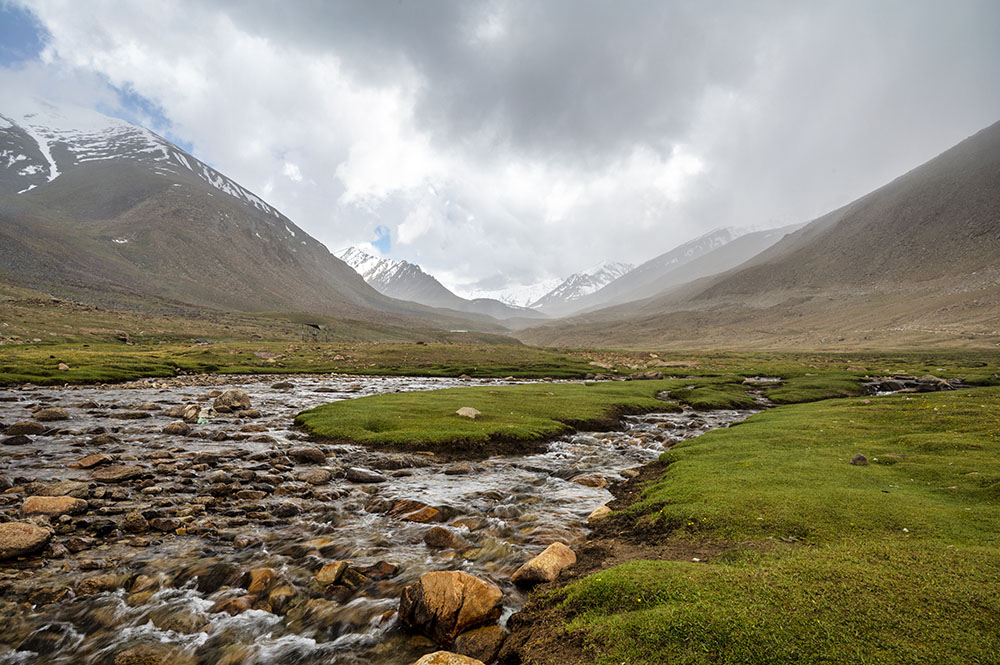
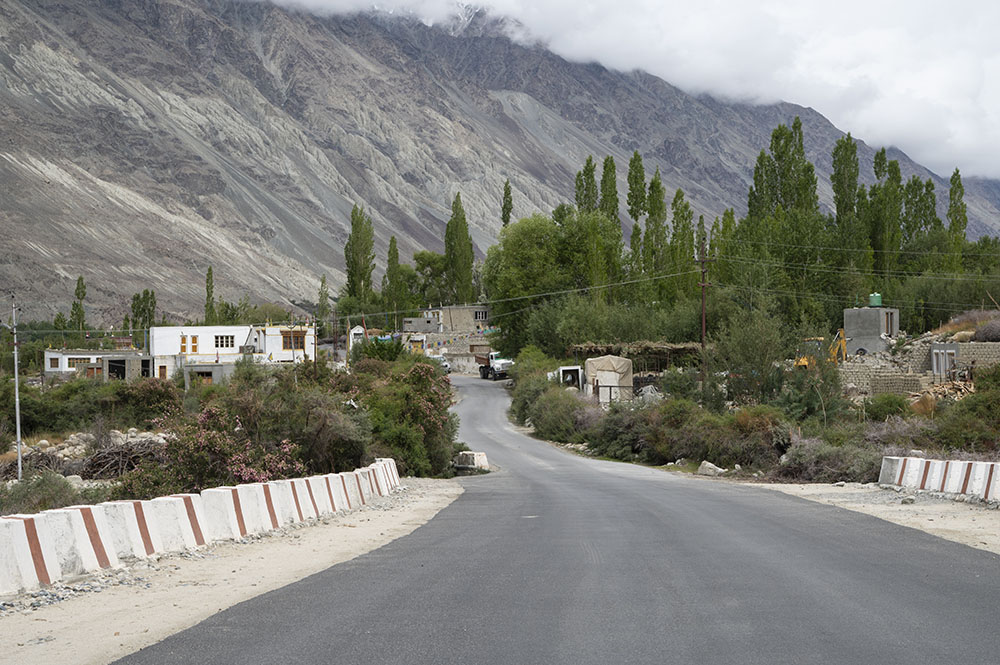
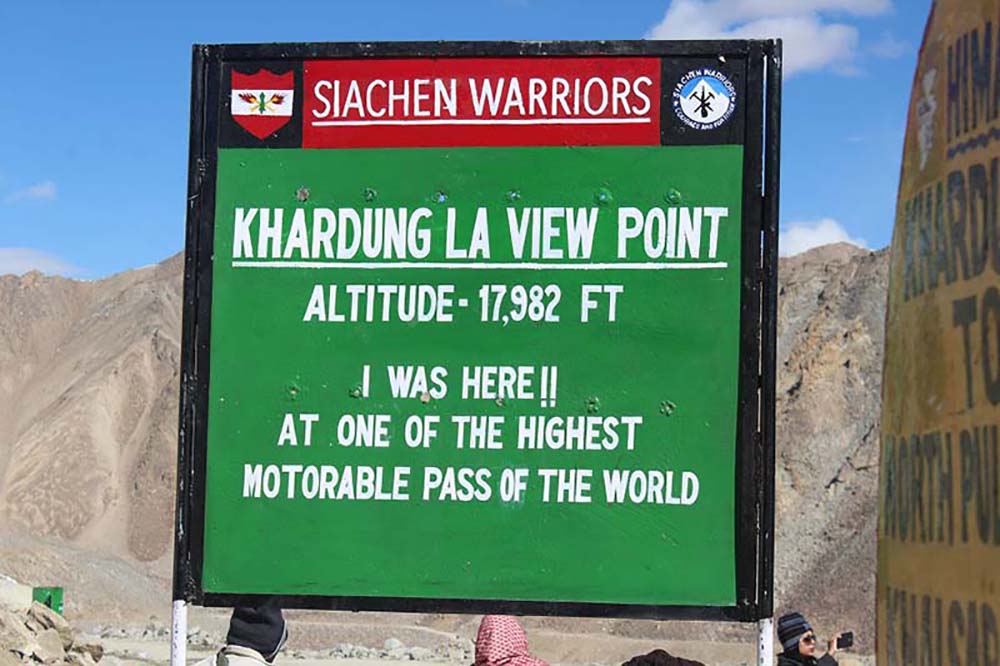
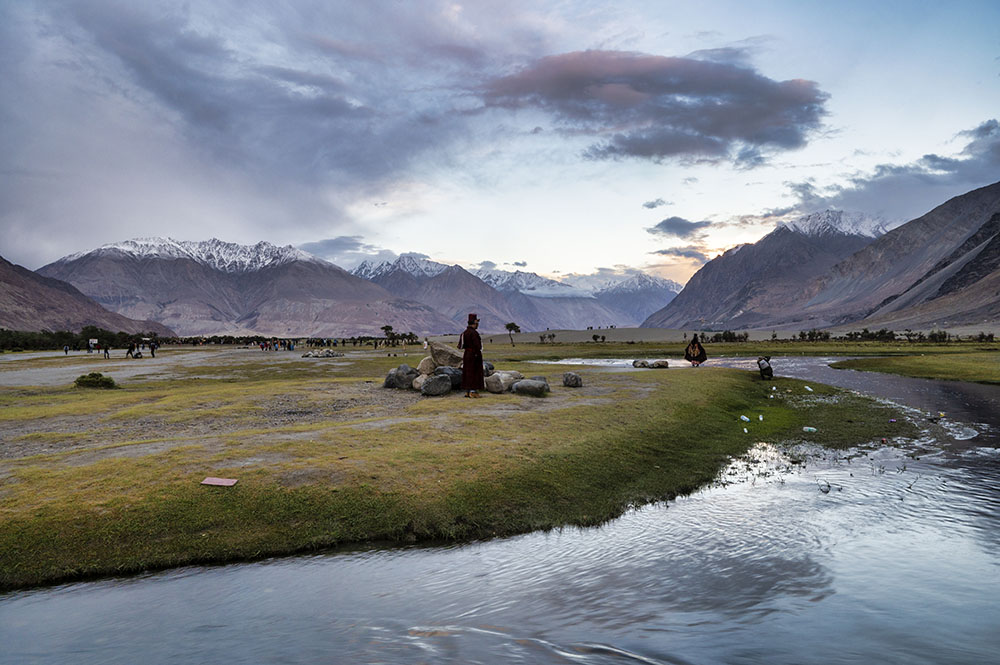
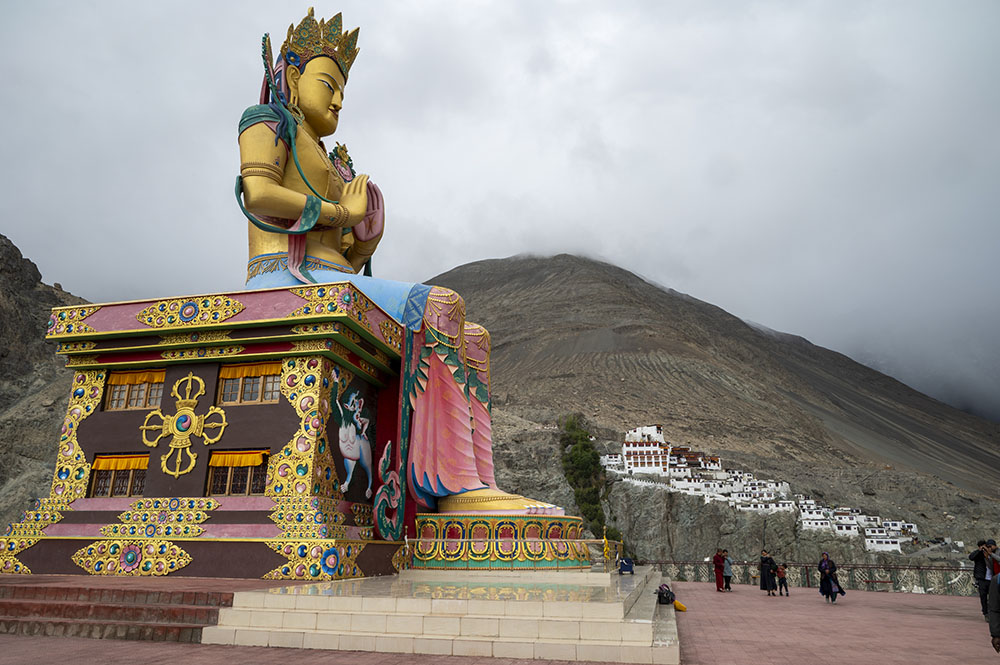
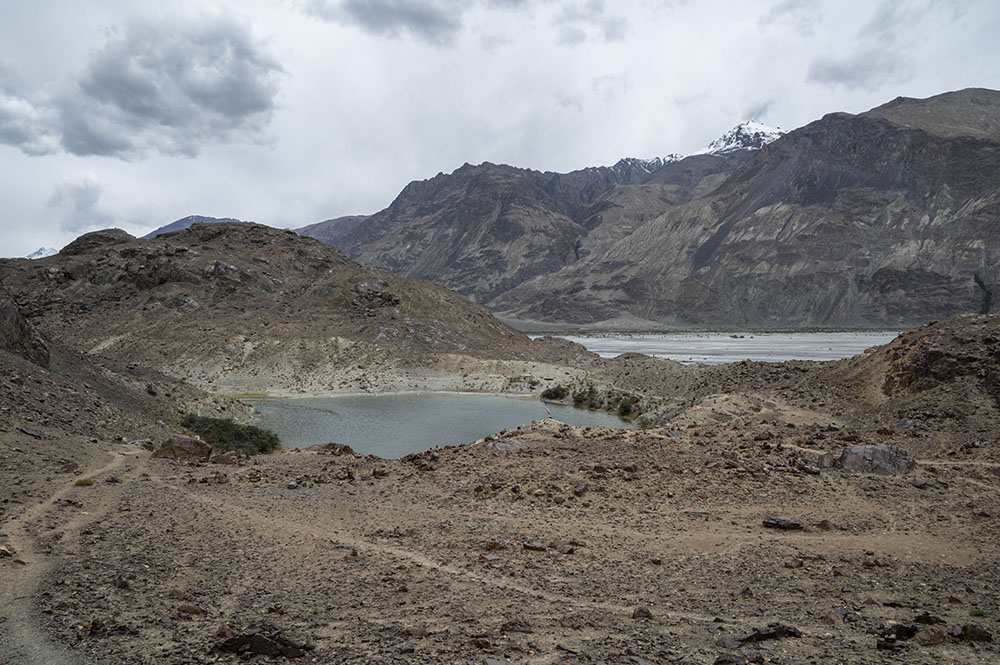
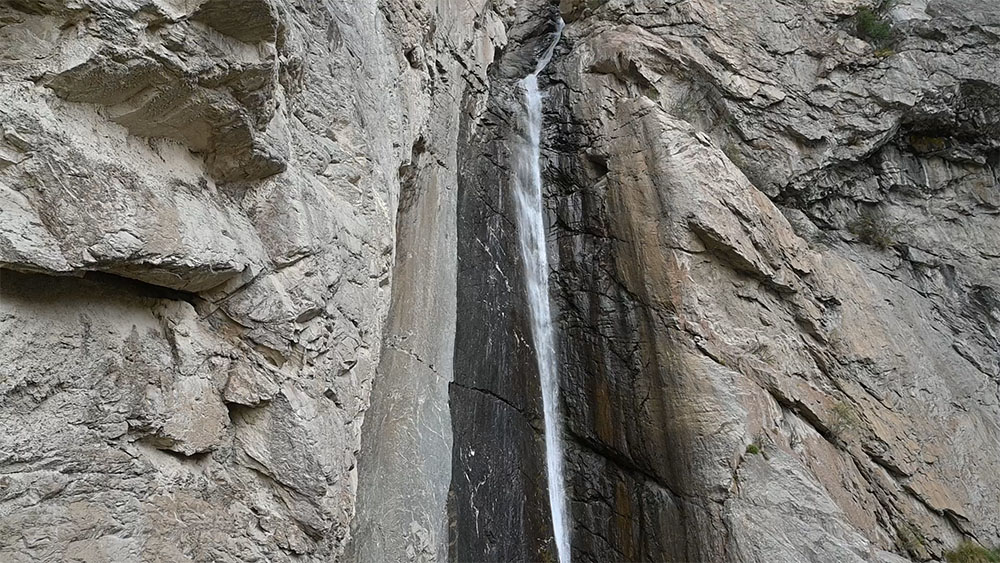
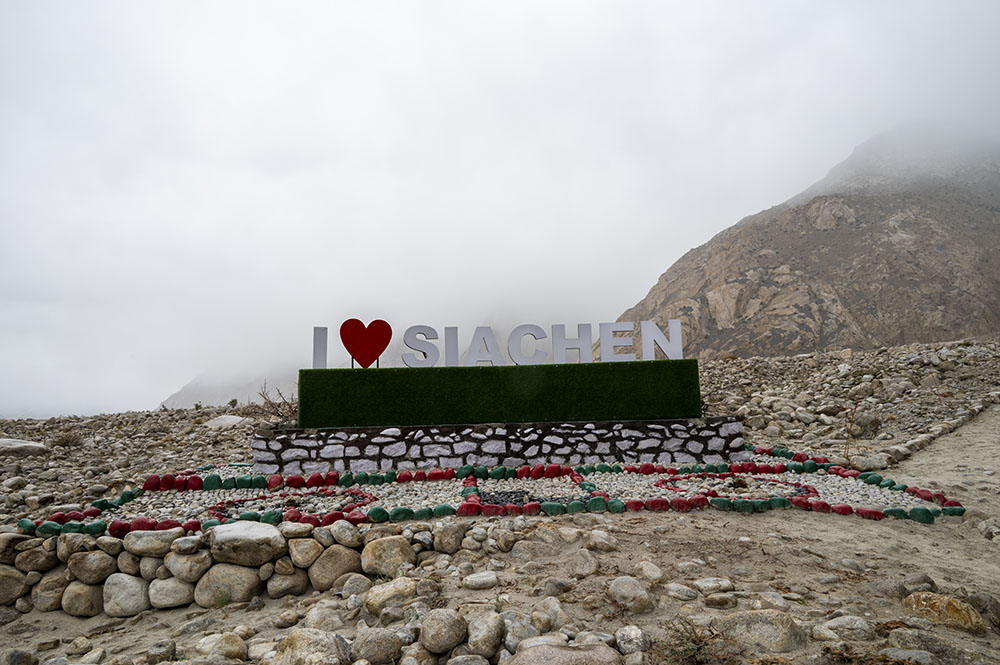
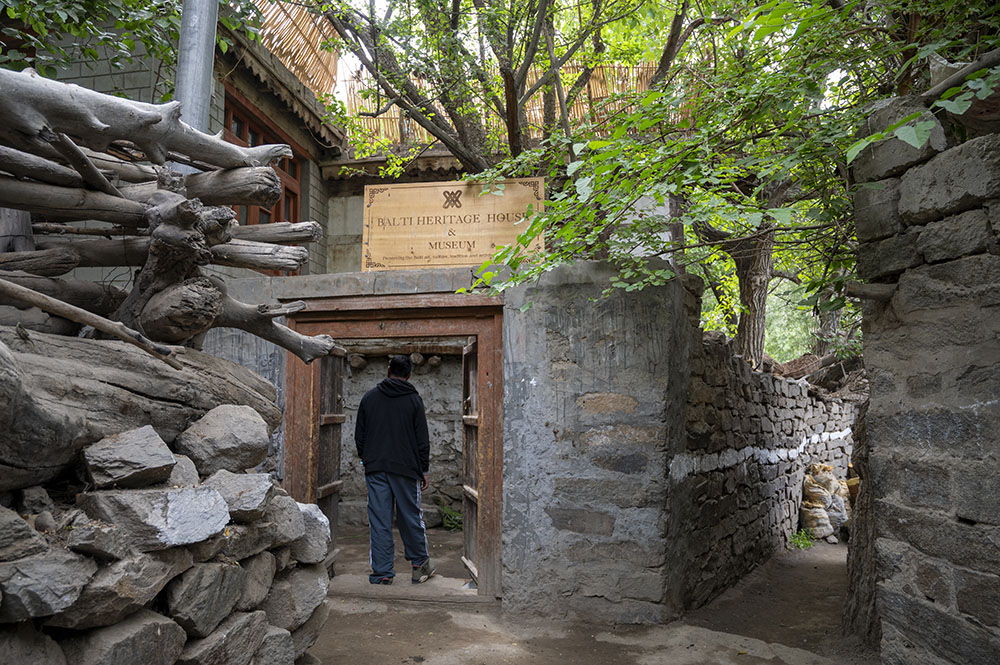
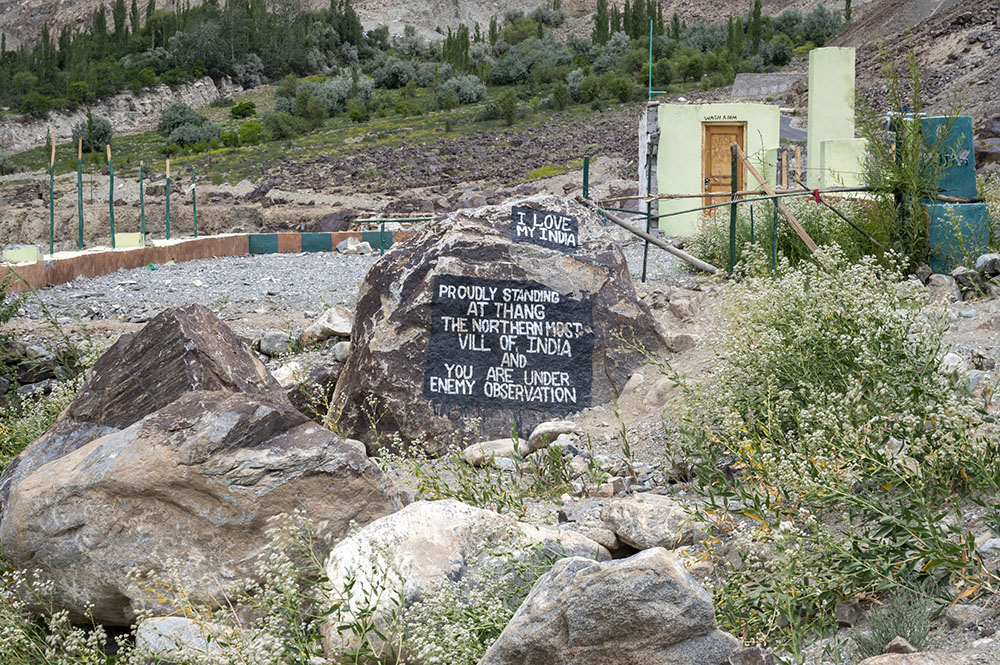
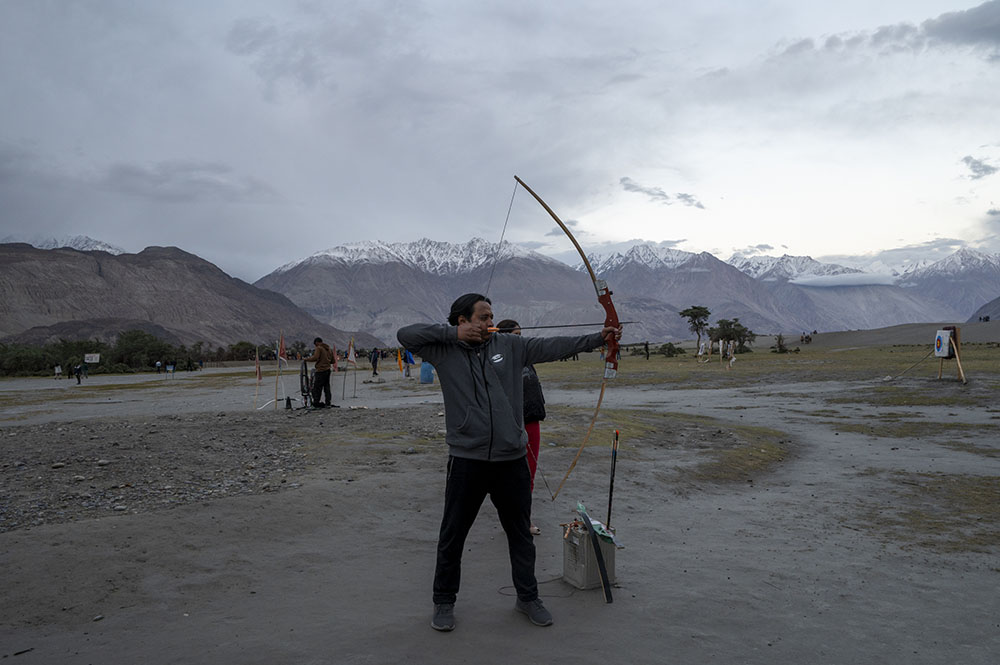
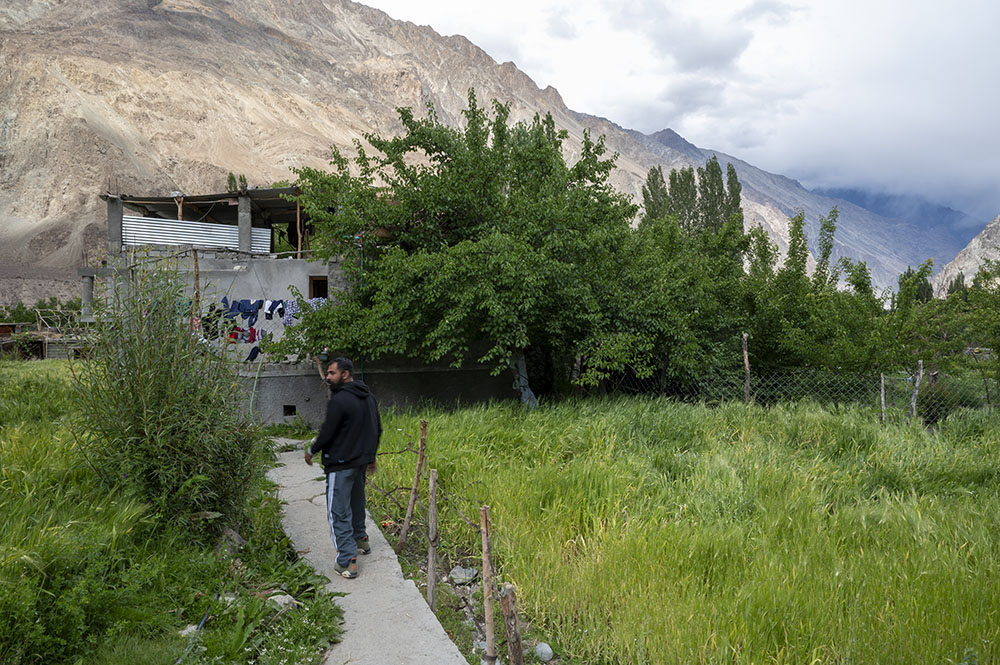
17 comments
Dear vargis
On the outset great work in guiding explorers and vacationers one and all. Just tripped on to ur site as planning to leh.
Itineary
1 leh
2 around leh
3 leh to turtuk
4 roam nubra valley
5 nubra to pangong stay tangtse
6 tangtse to chusul stay nyoma
7 nyoma to tso moriri
8 tso moriri to leh via chumtang
Is holding at turtuk safe.
Is getting permit required if u carry armed forces ID?
Any input on itineary?
Hi Charles,
1. Yes Turtuk is Safe.
2. There is no stay option at Nyoma, or at least there wasn’t one until last year. You may have to go to Hanle.
Hello Vargis! Hope you are doing well!!
I am planning to visit Leh on 2nd week of September with my wife. We will be flying to leh and are planning to hire a bike for the trip. My itinerary is:
Day 1: Flying to Leh(Morning)
Day 2: Leh Tour(Magnetic Hill, Shanti Stupa, Sham Valley)
Day 3: Leh to Hunder (Stay at Hunder)
Day 4: Hunder to Turtuk and back to Hunder
Day 5: Hunder to Pangong (via Wari La->Shyok->Darbuk->Pangong)
Day 6: Pangong to Leh
Day 7: Fly back to Home
Some of my Queries are:
1. Do you think that Day 4(Hunder – Turtuk – Hunder) & Day 5 is possible on a bike for a couple?
2. If not, can we plan for ‘Hunder – Leh – Pangong – Leh’ ? (Then Turtuk will be missed)
3. Is bike a good option for a couple with above itenerary?
4. What will be your suggestion for fuel and luggage management(Bullet 350) ?
5. Any suggestions for good bike rental service in Leh?
Please reply as we are in doubt and have to proceed with our bookings.
Thanks & Regards
Hi Arpan, Your itinerary is good brother.
1. Yes. But rather than Hunder, go to Panamik and stay there for the night. Explore more of Nubra.
3. Yes
4. You can buy fuel in black both in Nubra and at Pangong as well. About Rs. 100 per liter
5. No sorry. I do not recommend anyone. Just reach there, try a few bikes and finalize the one that seems the best,.
We are planning to go to Nubra Valley on 15th Sep. and stay at Hunder on 15th Sep, and then leaving for Pangong on 16th Sep. At what time we should leave from Leh so that we could cover most of the places. And what places can be covered including Sand Dunes, bacterian Camel Ride not making so much hectic. Kindly provide the good plan for these days.
Hi Vargis
Am back with a question! How far is it from Leh to Turtuk in terms of hours to reach? We have 2 nights in Nubra Valley and I am wondering whether to do:
Day 1: Leh to Turtuk (stay o/n) and Day 2: Turtuk to Hunder/Sumoor
or
Day 1: Leh to Hunder/Sumoor (stay O/N) and Day 2: DAY trip to Turtuk and return to Hunder/Sumoor for the night
Look for to your advice and inputs!
THANKS A MILLION IN ADVANCE
Hi Bhooma – Leh to Turtuk will easily take 8-9 hours depending upon your speed and breaks. 2nd option will be better, use that day to explore the valley until Turtuk and return to Hunder by evening
Thanks again, Varghis! 🙂
You are welcome 🙂
Hello Vargis: first of all congratulations for your excellent blog and thank you for sharing all this information. I will be in Ladakh this august for the third time and hope to make it to Nubra Valley this time. My question is: is it possible to visit NV with public transportation? or there is no alternative but getting a tour package? I have reserved three nights for NV. be well, be happy :). Juan Muller
Hi Juan – No need to get any tour packages. There is a bus service connecting Nubra to Leh and daily shared cabs as well. You will easily be able to make it without any packages at all, that will be just a waste of money.
Thanks Vargis. And, what about moving within Nubra Valley, are there local transportation let say between Diskit and Turtuk or Panamik?
There is a daily bus from Diskit to Turtuk and back. Shared cabs are available as well for moving in between the places.
Hi I have planned 3 days visit to nubra valley in last week of September , first night stay in turtuk and second night in diskit . I want to know weather conditions in last week of September and also the road conditions now as I had visited last this place in 2013 ,. Is there any improvement in khardungla ?! And is it ok to take wari la route while returning if I’m on a rented motorcycle ?! As we are not a group , only me n my girlfriend will be doing this trip.. kindly reply ..
Road conditions are good except for Khardung La. It is bad between SOuth and North Pullu. I will not recommend Wari La on a rented motorcycle, if something goes wrong, you will be all on your own as not many people go that way
This is exactly what i was searching for!!!
The two days itinerary is very enticing which covers Turtuk!
Me with 2/3 of my friends are planning to have a tour of Kashmir(srinagar and surroundings) and Leh. So the transport fares are an important issue because nothing beats having the car just to ourselves.
Vargis vai, could you please let me know the reserve taxi fare from this two day visit to Nubra valley including overnight at turtuk/diskit and back to Leh?
Bhai a private taxi for 2 days journey to Turtuk will cost you close to Rs. 13000-15000.